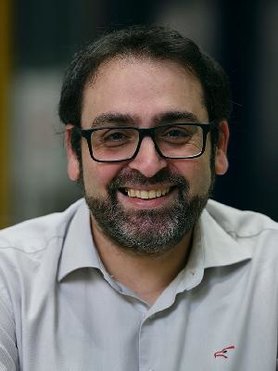

P. Manganiello
P. Manganiello
Profile
Publications
An overview of Patrizio's publications can be found here.
Biography
Patrizio Manganiello received the Master Degree, cum laude, in Electronic Engineering from the University of Salerno (Italy) in 2011 and the Ph.D. in Energy Conversion from the University of Campania “Luigi Vanvitelli” (Italy) in 2014. During his PhD, he carried out his research activities at the University of Cergy-Pontoise (France), from February 2013 until May 2014, and at the National University of Colombia in Medellin (Colombia), in June 2014. From October 2013 until June 2014 he was Adjunct Professor at the University of Cergy-Pontoise, teaching Computer Systems for Smart Buildings. In 2015, he collaborated with the Department of Electronic Engineering and Computer Science of the University of Salerno. From February 2016 until January 2018, he was working with KU Leuven (Belgium) as Postdoctoral Researcher in Modeling and Demonstration of Smart Photovoltaic Modules, in collaboration with IMEC (Belgium). Since March 2018 until December 2019, he was a Marie Skłodowska-Curie Research Fellow working at IMEC on the project "Smart Reconfigurable photovoltaic modules for Building Integrated PhotoVoltaic applications". Since January 2020, he is Assistant Professor of Photovoltatronics at Delft University of Technology.
His main research interests are in the development of innovative PV-based intelligent energy agents, the analysis, design and control of switching converters for renewable energy sources, and the management and on-line diagnostics of the whole energy conversion system as well as its different components.
He is member of the IEEE and member of the Technical Committee of the ELECTRIMACS conference. Since March 2018, he is serving as Associate Editor of IEEE Journal of Photovoltaics. He is co-inventor of 4 international patents on simulation and control of photovoltaic systems and energy management. He is also co-inventor and owner of an Italian patent on automatic detection of lighting points.
Expertise
Publications
-
2024
Combined Fabrication and Performance Evaluation of TOPCon Back-Contact Solar Cells with Lateral Power Metal-Oxide-Semiconductor Field-Effect Transistors on a Single Substrate
David A. van Nijen / Tristan Stevens / Yavuzhan Mercimek / Guangtao Yang / René A.C.M.M. van Swaaij / Miro Zeman / Olindo Isabella / Patrizio Manganiello
-
2023
A virtual bus parallel differential power processing configuration for photovoltaic applications
Afshin Nazer / Patrizio Manganiello / Olindo Isabella
-
2023
Bandwidth Characterization of c-Si Solar Cells as VLC Receiver under Colored LEDs
Yilong Zhou / Aya Ibrahim / Mirco Muttillo / Patrizio Manganiello / Hesan Ziar / Olindo Isabella
-
2023
Electrical performance of a fully reconfigurable series-parallel photovoltaic module
Andres Calcabrini / Mirco Muttillo / Miro Zeman / Patrizio Manganiello / Olindo Isabella
-
2023
-
Ancillary activities
-
2020-01-01 - 2025-01-19